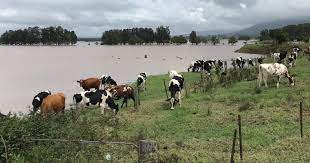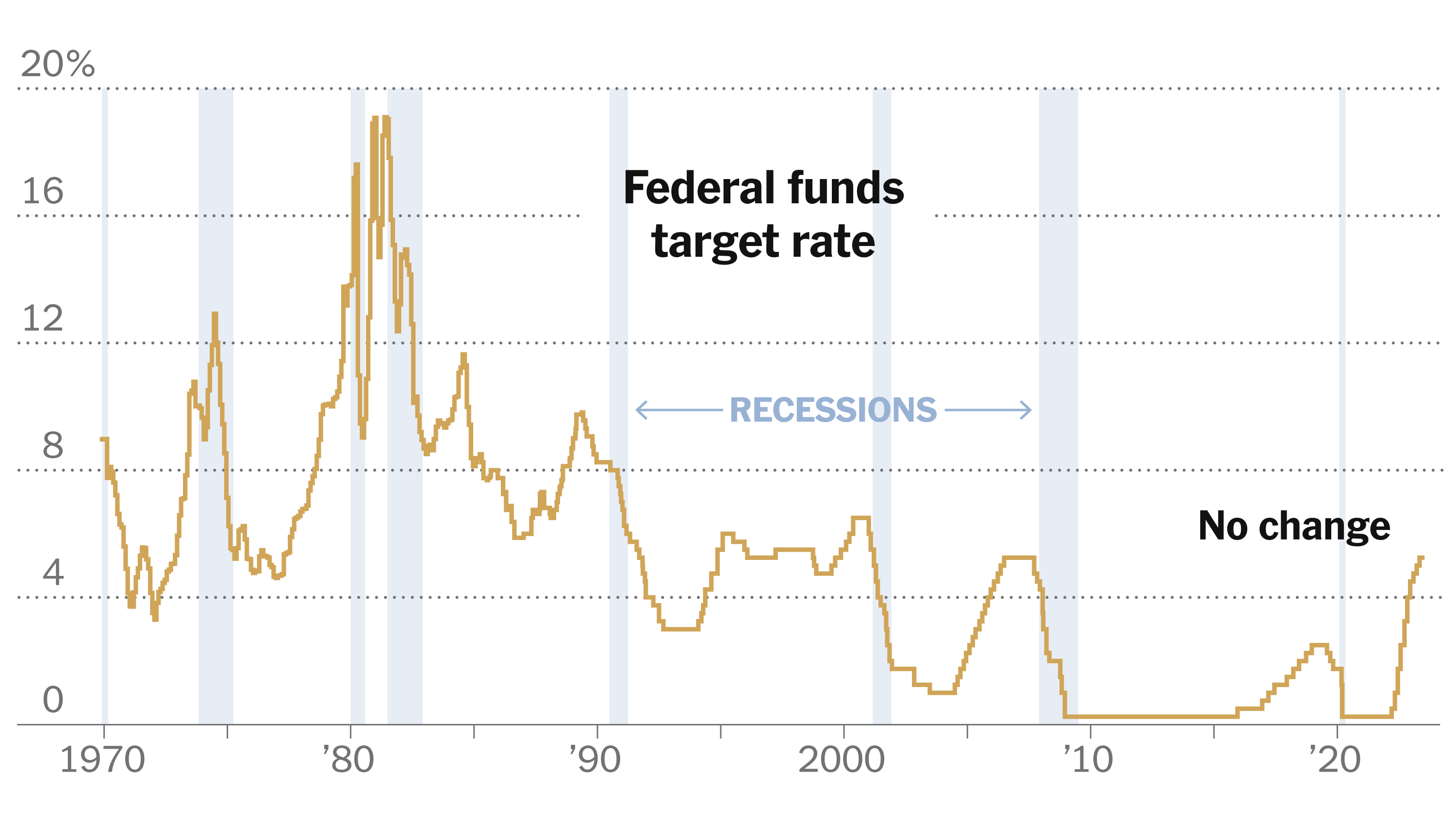Flood Preparedness And Response Strategies For Livestock Farmers

Table of Contents
Pre-Flood Planning and Prevention
Proactive planning is the cornerstone of effective flood response. A well-defined plan ensures you're ready to act quickly and decisively when a flood threatens. This section details essential pre-flood planning and prevention measures.
Develop a Comprehensive Farm Flood Plan
A detailed farm flood plan is your first line of defense. This plan should be a living document, reviewed and updated regularly. Key components include:
- Detailed evacuation routes for animals: Map out escape routes for each animal type, considering terrain and potential obstacles. Clearly mark these routes on your farm map. Consider different routes depending on the severity and location of the flood.
- Identify high-risk areas on your farm: Conduct a thorough flood risk assessment of your property. Identify areas prone to flooding, including low-lying pastures, areas near waterways, and potential drainage bottlenecks. This assessment should inform your overall flood mitigation strategy.
- Establish communication protocols with neighbors and emergency services: Create a contact list including neighbors who can assist, local emergency services, and veterinary professionals. Determine how you will communicate during a flood event, considering potential power outages.
- Create a detailed inventory of livestock and equipment: Maintain a comprehensive inventory, including animal breeds, ages, identification numbers, and the location of all valuable equipment. This is crucial for insurance claims and post-flood recovery.
- Secure important documents and records in a waterproof container: Store essential documents such as insurance policies, animal health records, and financial records in a waterproof and easily accessible container. Consider cloud storage for digital backups.
Strengthening Farm Infrastructure
Improving your farm's infrastructure can significantly reduce flood damage. Investing in flood mitigation measures now will pay dividends in the long run.
- Elevate feed storage and essential supplies: Raise feed storage areas above potential flood levels to protect vital resources. This includes feed, medications, and other essential supplies.
- Improve drainage systems around barns and pastures: Ensure efficient drainage to divert water away from buildings and livestock areas. This might involve installing drainage ditches, culverts, or improving existing systems.
- Reinforce fences and secure potentially hazardous materials: Strengthen fences to withstand floodwaters and prevent livestock escape. Secure hazardous materials such as chemicals and fuels to prevent contamination.
- Consider flood barriers or levees where appropriate: Depending on your location and flood risk, investing in flood barriers or levees might be a worthwhile investment to protect vulnerable areas.
Animal Health and Welfare Preparedness
Preparing for the health and welfare of your animals is paramount. A healthy animal is better equipped to withstand the stress of a flood event.
- Ensure adequate feed and water reserves for several days: Stockpile enough feed and water for your livestock to last several days, even if access to normal supplies is disrupted.
- Develop a plan for administering medications in emergency situations: Ensure you have a plan in place for administering necessary medications to your animals in an emergency, including access to necessary equipment and personnel.
- Identify and prepare a safe, temporary location for livestock: Identify a high-ground location or other suitable temporary housing for your livestock. This could be a friend's farm or a designated emergency shelter.
- Update animal identification tags and records: Ensure all your animals are clearly identified with up-to-date tags and accurate records. This is essential for tracking and recovery efforts post-flood.
During a Flood Event
When a flood threatens, swift and decisive action is critical. Your pre-developed farm flood plan should guide your response.
Evacuating Livestock
The safety of your animals is the top priority during a flood. Your evacuation plan should prioritize speed and efficiency.
- Follow your pre-developed farm flood plan: Refer to your detailed plan to ensure a coordinated and effective evacuation.
- Prioritize the safety of your animals: Focus on moving animals to safety quickly and calmly, minimizing stress and risk of injury.
- Move livestock to higher ground or designated safe areas: Transport animals to pre-identified safe locations, ensuring adequate space and protection from the elements.
- Use appropriate transportation methods for different animal types: Employ suitable transportation methods for each animal type, considering their size, temperament, and transportation needs.
- Ensure animals have access to food and water during transit: Provide access to food and water during transportation to prevent dehydration and stress.
Protecting Remaining Livestock
If evacuation isn't feasible, focus on protecting animals that remain on your property.
- Move animals to upper levels of barns if feasible: If barns are safe, move animals to upper levels to keep them out of harm's way.
- Secure loose objects that could injure animals: Remove any objects that could injure animals during the flood.
- Monitor animals closely for signs of stress or injury: Observe animals for signs of stress or injury and provide necessary care.
- Provide supplemental feed and water as needed: Ensure animals have access to food and water throughout the flood event.
Post-Flood Recovery and Remediation
Post-flood recovery is a crucial phase requiring careful assessment and action.
Assessing Damage and Animal Welfare
After the floodwaters recede, a thorough assessment is necessary.
- Check for injuries and illnesses in your livestock: Conduct a comprehensive health check for all animals, seeking veterinary assistance as needed.
- Evaluate the structural damage to your farm buildings: Assess the extent of damage to your farm buildings, and determine what repairs are needed.
- Assess feed and water availability: Check the availability of feed and water supplies, arranging for replacements if necessary.
- Seek veterinary assistance as needed: Contact a veterinarian for assistance with injured or ill animals.
Cleaning and Sanitizing
Cleaning and sanitation are vital to prevent the spread of disease.
- Thoroughly clean and disinfect barns and pastures: Remove mud, debris, and contaminated materials, and disinfect all surfaces to eliminate pathogens.
- Dispose of contaminated feed and materials properly: Dispose of contaminated feed and other materials in accordance with local regulations.
- Implement measures to prevent the spread of disease: Take precautions to prevent the spread of disease among your animals.
- Repair or replace damaged equipment: Repair or replace damaged equipment to resume normal operations.
Seeking Financial and Government Assistance
Explore available resources to support your recovery.
- Contact your insurance provider to file a claim: Contact your insurance provider to report the damage and begin the claims process.
- Investigate available government assistance programs for farmers: Research and apply for available government aid and disaster relief programs.
- Explore options for financial aid and loan programs: Explore options for financial aid and loan programs to help rebuild your farm.
Conclusion
Protecting your livestock during and after a flood requires careful planning and swift action. By implementing the flood preparedness and response strategies outlined in this article, livestock farmers can significantly reduce the impact of floods on their operations. Remember, a comprehensive farm flood plan, coupled with proactive measures, is key to mitigating losses and ensuring the safety and well-being of your animals. Don't delay – develop your effective flood preparedness strategy for your livestock farm today. Investing in flood preparedness is an investment in the future of your farm and the well-being of your animals.

Featured Posts
-
 Trumps Evolving Stance On Crypto From Skeptic To Millionaire
May 07, 2025
Trumps Evolving Stance On Crypto From Skeptic To Millionaire
May 07, 2025 -
 Lewis Capaldis Surprise Return First Performance Since 2023 At Tom Walker Charity Gig
May 07, 2025
Lewis Capaldis Surprise Return First Performance Since 2023 At Tom Walker Charity Gig
May 07, 2025 -
 Steph Curry Critiques Draymond Greens Night Night Celebration
May 07, 2025
Steph Curry Critiques Draymond Greens Night Night Celebration
May 07, 2025 -
 The Feds Cautious Approach Why Powells Delaying Interest Rate Cuts Despite Trumps Urging
May 07, 2025
The Feds Cautious Approach Why Powells Delaying Interest Rate Cuts Despite Trumps Urging
May 07, 2025 -
 500 000 Pei Bill For Nhl 4 Nations Face Off Legislative Details
May 07, 2025
500 000 Pei Bill For Nhl 4 Nations Face Off Legislative Details
May 07, 2025
Latest Posts
-
 Xrp Ripple Investment Potential For Life Changing Returns
May 08, 2025
Xrp Ripple Investment Potential For Life Changing Returns
May 08, 2025 -
 Xrp Up 400 In 3 Months A Detailed Investment Analysis
May 08, 2025
Xrp Up 400 In 3 Months A Detailed Investment Analysis
May 08, 2025 -
 Xrp Rally Analysis Of The Us Presidents Article On Trumps Ripple Connection
May 08, 2025
Xrp Rally Analysis Of The Us Presidents Article On Trumps Ripple Connection
May 08, 2025 -
 Sec Approval Of Xrp Etfs A Potential 800 Million Market Influx
May 08, 2025
Sec Approval Of Xrp Etfs A Potential 800 Million Market Influx
May 08, 2025 -
 Should You Buy Xrp After Its Recent 400 Rally
May 08, 2025
Should You Buy Xrp After Its Recent 400 Rally
May 08, 2025
